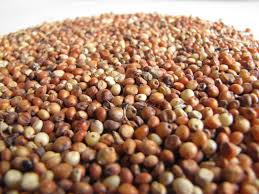Sorghum Flour Production in Nigeria; The Feasibility Report.

Sorghum (Sorghum bicolor (L.) Moench) is a cultivated tropical cereal grass. It is generally, although not universally, considered to have first been domesticated in North Africa, possibly in the Nile or Ethiopian regions as recently as one thousand (1,000) BC1. The cultivation of sorghum played a crucial role in the spread of the Bantu (black) group of people across sub-Saharan Africa.
Today, sorghum is cultivated across the world in the warmer climatic areas. It is quantitatively the world’s fifth largest most important cereal grain, after wheat, maize, rice and barley. In Africa, sorghum is still largely a subsistence food crop, but as report will show it is increasingly forming the foundation of successful food and beverage industries in Nigeria.
Nigeria is the second largest producer of sorghum, with the majority of domestic production used for household consumption/fodder. Sorghum is produced in virtually all the states in Nigeria, though some states produce more than others.
Some of states that sorghum is produced in large quantity in Nigeria include Plateau, Kano, Kaduna, Sokoto, Gombe, Bauchi, Zamfara, Benue, Kogi, Nassarawa and Taraba. The raw materials are also readily available.
Sorghum flour as the name depicts is gotten from sorghum grain which is the grain from a sorghum plant scientifically referred to as Sorghum bicolor.
The colour variety of sorghum range from dark brown to red to white with several benefits and flavours associated with each. Statistics shows that Nigeria is the highest producer of sorghum in West Africa and presently ranked as third in the world.
Sorghum is a highly valuable cereal that is mainly produced in the northern belt of Nigeria. Sorghum can be used as a substitute flour in place of other staples and cereal flour. The product is sorghum flour and is to be prepared and eaten as ‘‘swallow’’ which is similar to Semovita, Semolina, Grinded Rice (Tuwo) etcetera.
It contains high protein (9%) compared to other crops like maize, rice and its flour is used in preparation of several staple foods locally and universally. The cereal is processed into flour and fortified with vitamin premix to make up for processing loss. The product is good for both old and young. Also, it can be consumed without ethnic, cultural or religious hindrances.
This report examines the financial viability of establishing a sorghum flour processing plant in Nigeria.
The production capacity of the proposed plant is three (3) tons per day and would operate a shift of eight (8) hours each at eighty percent (80%) of installed capacity for three hundred (300) working day producing about one hundred and twenty (120) tons of sorghum flour bi-monthly with an input: output ratio of 1:0.8.
Custom Research Request
Still haven't found what you're looking for?
Speak to our Custom Research Team.
Table of Contents
EXECUTIVE SUMMARY 1.0 Business Overview 1.1 Description of the Business 1.2 Vision and Mission Statement 1.3 Business Objective 1.4 Value Proposition 1.5 Critical Success Factor of the Business 1.6 Current Status of Business 1.7 Description of the Business Industry 1.8 Contribution to Local and National Economy 2. Marketing Plan 2.1 Description of product 2.2 Product Packaging and delivery 2.3 The Opportunity 2.4 Pricing Strategy 2.5 Target Market 2.6 Distribution and Delivery Strategy 2.7 Promotional Strategy 2.8 Competition 3. Production Plan 3.1 Description of the Location 3.2 Raw Materials 3.3 Production Equipment 3.4 Production Process 3.5 Production Cost 3.6 Stock Control Process 3.7 Pre-Operating activities and expenses 3.7.1 Operating Activities and Expenses 3.8 Project Implementation Schedule 4.0 Organizational and Management Plan 4.1 Ownership of the business 4.2 Profile of the promoters 4.3 Key Management Staff 4.3.2 Management Support Units 4.4 Details of salary schedule 5. Financial Plan 5.1 Financial Assumption 5.2 Start Up Capital Estimation 5.3 Source of Capital 5.4 Security of Loan 5.5 Loan Repayment Plan 5.6 Profit and Loss Analysis 5.7 Cash flow Analysis 5.8 Viability Analysis 6.0 Business Risk and mitigation factor 6.1 Business Risks 6.2 SWOT Analysis
Project Specification:
Additional Info
Get this Report
Direct bank transfer
To order the report, Please do pay the sum of ₦30,000 into
Account Name : Foraminifera Market Research Ltd
Account Number : 274 20 569 37
Account Name : Foraminifera Market Research Ltd
Account Number : 101 76 603 95
Account Name : Foraminifera Ventures
Account Number : 011 66 066 32
Make your payment directly into our bank account. Please use your Order ID as the payment reference. Your order will not be shipped until the funds have cleared in our account.
Instructions
After payment call us on 01 -29 52 413 / 08033782777 or email us at foraminiferamarketresearch@yahoo.com with the payment details. After payment confirmation, the soft copy of the report would be sent to you within 24 hours.
